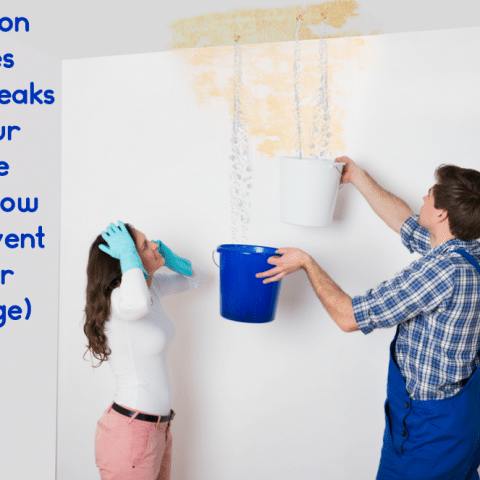Overview To Water Leak Detection At Home
Overview To Water Leak Detection At Home
Blog Article
This article below in relation to Locating water leaks is incredibly stimulating. You should check this stuff out.

The moment you find a leak, calling your plumber for repairs is the most effective option. Nonetheless, some tiny water leaks may not show up. Here are some hacks that help if you can not discover it with your nude eyes.
Early detection of leaking water lines can mitigate a potential disaster. Besides conserving you money, it will decrease the stress as well as frustration.
Check Water Consumption
If you identify abrupt modifications, regardless of your consumption being the same, it indicates that you have leakages in your plumbing system. A sudden spike in your expense shows a fast-moving leakage.
A constant rise every month, even with the same habits, reveals you have a sluggish leakage that's likewise gradually intensifying. Call a plumber to extensively inspect your residential property, especially if you really feel a warm location on your flooring with piping beneath.
Evaluate and Examine the Scenario
Property owners must make it a behavior to check under the sink counters and even inside cupboards for any type of bad odor or mold and mildew development. These 2 warnings show a leakage so punctual focus is required. Doing routine inspections, also bi-annually, can save you from a major issue.
Analyze the Water Meter
Every home has a water meter. Inspecting it is a surefire manner in which assists you find leaks. For beginners, switch off all the water sources. Ensure no person will certainly purge, make use of the faucet, shower, run the cleaning device or dishwashing machine. From there, most likely to the meter and watch if it will alter. Since nobody is using it, there need to be no motions. That suggests a fast-moving leak if it relocates. If you discover no changes, wait an hour or 2 and also inspect back once more. This means you may have a slow leakage that can also be below ground.
Asses Exterior Lines
Don't forget to inspect your outside water lines as well. Test spigots by connecting a yard hose. Needs to water seep out of the connection, you have a loosened rubber gasket. Change this and guarantee all links are tight. If you have actually obtained a lawn sprinkler, it will assist get it professionally analyzed as well as kept each year. One little leakage can squander tons of water as well as spike your water expense.
Do a Food Coloring Examination
When it comes to water usage, 30% comes from bathrooms. If the shade somehow infiltrates your bowl throughout that time without flushing, there's a leak between the tank as well as bowl.
Examine for stainings and also weakening as many home appliances as well as pipelines have a life span. If you think leaking water lines in your plumbing system, do not wait for it to intensify.
The moment you find a leakage, calling your plumber for repair services is the finest solution. Some small water leaks may not be noticeable. Inspecting it is a proven method that aids you discover leakages. One little leakage can waste loads of water and increase your water expense.
If you presume dripping water lines in your plumbing system, don't wait for it to intensify.
How to Know If Your Home Has a Hidden Leak
Water Meter Reveals Inexplicable Water Usage
If you’d like to test whether or not there’s a leak somewhere in your home, you can do this using your water meter. Here is how to conduct the test:
Don’t use any water in your home for at least 30 minutes; this also means not turning on faucets or water-using appliances.
Go outside, and check your water meter for activity.
If your water meter shows that there was activity, even though no one was using any water, this proves that there is a leak in your home.Visible Mold or Mildew Growth
Leaks behind walls create moist, dark environments that allow mold and mildew to grow and thrive. Eventually, you might see mold growth forming on the wall closest to a hidden leak.
If mold is growing in an area that receives a high amount of moisture, such as a bathroom, it may simply be an indication that better ventilation is needed. However, if you see mold growth on a wall or the ceiling in an area where you would not expect, you probably have a hidden leak.
Musty, Mildew Odor
Sometimes you might not be able to see the mold or mildew that is growing as a result of a leak. However, the smell can give the problem away just as easily. If you catch a whiff of something musty, there’s a good chance that old water is collecting somewhere in your home that you can’t see.
Stained/Warped Walls, Ceilings, or Floors
When your home soaks up water, a variety of red flags can become visible, including ceiling stains, bubbling drywall, warped walls, and sagging floors. While these issues can be caused by excess humidity, they can also be signs that a pipe or plumbing connection has started leaking behind your walls.
Inexplicably High Water Bill
After a while, you get a general sense for what your water bill should be. If you own a pool or sprinkler system, your bill will tend to be higher during summer. However, if you receive a water bill that seems especially high, and you can’t figure out what caused it, then you may have a hidden leak somewhere that’s increasing your bill.
https://www.plumbingjoint.com/blog/2019/july/how-to-know-if-your-home-has-a-hidden-leak/

I discovered that blog posting about Finding hidden leaks when doing a search on the web. You should take the time to share this post if you enjoyed it. Thanks for taking the time to read it.
Report this page